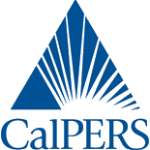Issue 1.4

The Sustainability Consortium — “TSC” — was launched by the management of Wal-Mart Stores in 2007 with initial funding to the University of Arkansas and Arizona State University to develop approaches to greater sustainability; the Product Category Life Cycle Assessment was made public by the two schools in 2010. The next year TSC partnered with Wageningen University in Holland to its European operations.
Today, there are 2,000 users of TSC tools; the organization convenes more than 75 meetings for 200-plus partnering organizations; and, there are more than 100 member organizations in TSC including: Amazon; Cisco; CDP; Bayer; Dow; Johnson Controls; Mars; Monsanto; Kellogg’s; SAP; and of course, Wal-Mart. (The complete roster is here: https://www.sustainabilityconsortium.org/members.)
In July, “presenting compelling evidence” for leaders in the Corporate Community,” TSC released its second annual “Impact Report” in July.
And the “evidence presented” to corporate supply chain managers (and corporate C-Suite) was that the act of integrating sustainability into every decision and process helps companies avoid risks to their bottom lines and creates more sustainable products for the environment.
 The report is titled, “The Call For Collective Action Across Supply Chains,” highlighting increased customer-supplier engagement, with 2,000-plus suppliers using the TSC category sustainability surveys to report on their progress during the year; this is of critical importance to a growing number of customers, especially retail buyers.
The report is titled, “The Call For Collective Action Across Supply Chains,” highlighting increased customer-supplier engagement, with 2,000-plus suppliers using the TSC category sustainability surveys to report on their progress during the year; this is of critical importance to a growing number of customers, especially retail buyers.
There was a 25 percent increase in responses (call these progress reports) by suppliers over the prior year. The collective sales of this universe exceed US$200 billion annually (in sales to retail partners).
TSC’s CEO Euan Murray notes that it is encouraging to see customer-supplier engagement increasing, and commented that, if done right, “a collective-action model can make rapid, marketing-changing
improvements to unlock growth…”
Supplier-respondents to the survey reported they had taken action to improve their company’s sustainability survey scores (40% replied in the positive). The TSC reported that “clear metrics for evaluating progress to safer chemicals” have emerged, with 13% of companies reporting reducing the use of CoHCs by 416 million pounds / 189 kilograms over the two years of the survey.
- In December 2013, in an interview with The Guardian newspaper, Wal-Mart, the world’s largest retailer explained that “chemicals of high concern” would over time be eliminated in the stores. The chemicals were not identified. Products would be monitored (the ingredient lists) so that Wal-Mart could push suppliers to reduce or eliminate certain chemicals.
- Competitor Target Stores also adopted a similar program.
- Proctor & Gamble, a major supplier to Wal-Mart about that time announced it would eliminate triclosan and DEP/a phthalate from its products. That was all happening about eight years ago.
 In 2009, Wal-Mart had said it was developing a “sustainability
In 2009, Wal-Mart had said it was developing a “sustainability
index,” which would be used twice a year to evaluate suppliers
on “key sustainability” elements.
And so over time, many more suppliers to retail have disclosed
more about their ingredients and processes. To a point.
On the other hand…of the responses scoring below 10%, 70% of suppliers responded: We are unable to determine at this time… Despite this on the negative side, TSC staffers say that the good news is that many more suppliers are working to get the answers and to communicate publicly on their sustainability journey.
The heart of what the Consortium does, says its CEO, is to harness the demand signal from retailers, brand marketers, and other important purchasers to “super-charge” the implementation of sustainability improvements across the value chain by encouraging collective action.
The Consortium describes its mission as “creating change through the implementation of our science-based, metric-driven approach. Through collaborating with our broad membership base, and other stakeholders, we drive innovation for a new generation of products a more sustainable
supply networks.”
This is done through four initiatives:
- Tools for measuring and reporting (used by buyers and suppliers).
- Support and training in the use of the tools.
- Collaboration and leadership (collaboration with hundreds of stakeholders).
- Through membership and bringing stakeholders together.
The industry sectors in focus for TSC:
- Clothing, Footwear, Textiles
- Electronics
- Food, Beverage, Agriculture
- General Merchandise
These comprise 90% of sustainability impacts in consumer goods, says TSC. There are Working Groups for each of these categories.
There’s more information for you in the TSC report at:
https://www.sustainabilityconsortium.org/impact/impact-report/
See the accompanying content focused on the Chemical Footprint Project (CFP), which is related.
NOTES FROM G&A INSTITUTE
Our clients over the years have included most of the large-cap, mid-cap and some small-cap chemical manufacturers, and multinationals as well.
We are experts in the chemicals industry and can assist you in participation in the TSC and in your company’s CFP involvement, as well as help you to analyze the potential impact of these projects and issues going forward — in relation to customer relations, investor relations, industry relations, third party queries, and more.
If you are interesting in learning more about the work of Governance & Accountability Institute and its portfolio of resources, tools and service offerings, please click here





